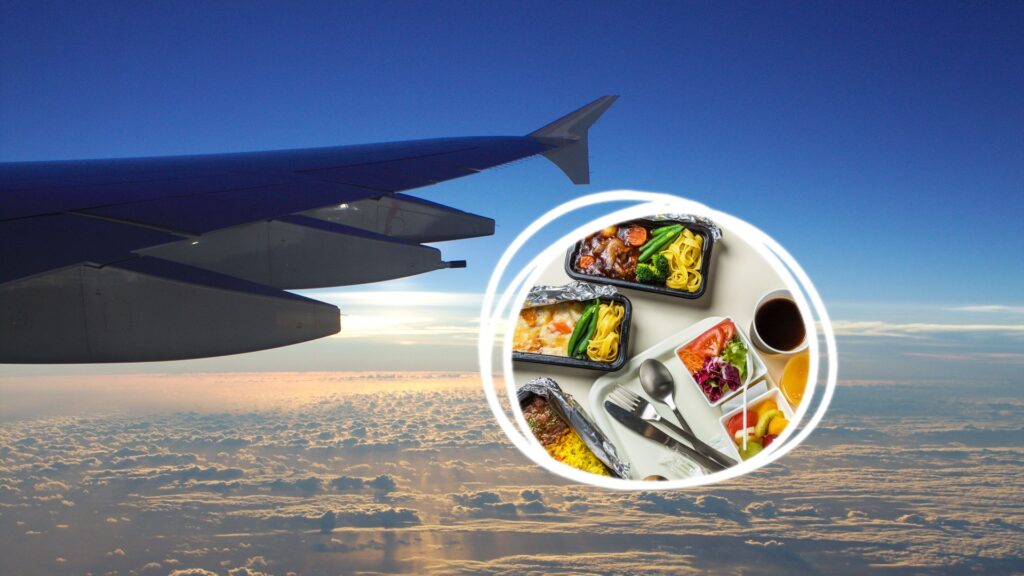The in-flight catering industry is a complex logistical operation that delivers over a billion meals to passengers annually. As flights can be long, passengers need sustenance, but the food must taste as good in the air as it does on the ground. In recent years, airline catering has evolved into a significant aspect of the onboard experience, serving as a key differentiator among airlines.
Airlines have been serving meals onboard for over a century. Early offerings were basic, but as aircraft technology advanced, so did the complexity of in-flight meals. Some airlines even established onboard kitchens with chefs during the 20th century. United Airlines pioneered the concept of a dedicated catering facility, setting a precedent for the industry as it exists today.
Understanding the Catering Process
Most airlines outsource their in-flight meal services to specialized catering companies. The three largest players in this field are Flying Food Group, GateGourmet, and LSG Sky Chefs. These companies operate under airport-specific contracts, meaning airlines often work with multiple caterers across their network. However, some airlines, like Emirates, manage their own catering through subsidiaries such as Emirates Flight Catering, which also serves over 100 international carriers at Dubai International Airport.
Role of Emirates Group Subsidiaries
- Emirates Airline: Passenger airline
- Emirates SkyCargo: Cargo airline
- Emirates Flight Catering: Catering services for Emirates and other airlines at Dubai International Airport
- dnata: Ground services at Dubai International Airport
Many airlines partner with celebrity chefs and Michelin-starred restaurants to enhance their meal offerings for premium passengers. These collaborations are primarily marketing strategies rather than efforts to revolutionize in-flight dining. Once a recipe is approved, it is sent to catering facilities for preparation.
Creating Meals for the Sky
Airlines plan their menus months in advance, considering the unique challenges of dining at altitude. Taste perception changes in flight, with sweetness and saltiness reduced by around 30%. To compensate, chefs incorporate more spices and umami-rich ingredients like tomatoes and parmesan cheese. Offering a variety of special meals, such as kosher or vegetarian options, is crucial for attracting diverse passengers.
Ingredients are purchased in bulk, with agreements made well ahead of preparation. While some items can be stored long-term, fresh ingredients like vegetables and meat require constant replenishment. This necessitates complex supply chains to ensure timely delivery from farms to catering facilities.
From Kitchen to Cabin
Large catering facilities, such as Newrest’s $54 million kitchen in Atlanta, are capable of producing thousands of meals daily. These facilities employ advanced technologies like robotics and digitized information to maintain high output and consistency. Meals must meet strict standards to ensure they taste the same on the ground and in the air. Precise measurements are crucial for fitting meals onto airline trays and maintaining ingredient weight accuracy.
Once prepared, meals are blast-chilled to prevent bacterial growth, typically to temperatures below 46.4°F (8°C). This critical step ensures food safety, as any errors could result in entire batches being discarded. After chilling, meals are packed into carts, loaded onto trucks, and transported to the aircraft.
Onboard Meal Service
Catering trucks, equipped with lifting systems and refrigerated interiors, transport meals to the aircraft. Contrary to popular belief, flight attendants do not use microwaves or fridges; instead, they rely on ovens to reheat meals. The distinction between economy and premium cabin meals lies in the quality and presentation, not the preparation process.
Airlines often require pilots to eat different meals to prevent food poisoning—a policy that became widespread following a 1975 incident where 144 passengers suffered severe food poisoning on a Japan Airlines flight. Flight attendants may consume leftover passenger meals, while pilots typically have designated meals.
Catering Beyond Passenger Flights
Even cargo flights require catering, as pilots need sustenance on long journeys. The quality and size of these meals vary by airline. For instance, FedEx provides chocolate cake slices for its pilots. Freighters have similar galley equipment to passenger planes, but pilots must prepare their own meals.
In the realm of private aviation, companies like NetJets and VistaJet offer highly customized dining experiences to match their premium service. Larger jets feature full galleys and dedicated flight attendants trained in meal preparation and wine pairing, offering a “dine-on-demand” experience.
The Bigger Picture of In-Flight Catering
Aircraft catering is a meticulous process involving months of planning to deliver safe, quality meals. While the cost per meal varies, first-class meals on top airlines can exceed $100, whereas economy meals range from $5 to $15. The COVID-19 pandemic severely impacted caterers, leading to innovative solutions like selling airplane meals online to nostalgic consumers. As travel rebounded, these services were largely discontinued.
Given the challenges of taste perception at altitude and the need to reheat meals, passengers should temper expectations. Pasta may become overcooked, poultry can dry out, while Indian dishes and moisture-rich foods like burgers may fare better. Ultimately, in-flight catering remains a critical component of the airline industry, balancing logistical complexity with culinary creativity.
 Podgorica Protest Highlights Tension Over Literary Award Decision
Podgorica Protest Highlights Tension Over Literary Award Decision Indiana Girl, 5, Seriously Injured in Pit Bull Attack Sparks Safety Debate
Indiana Girl, 5, Seriously Injured in Pit Bull Attack Sparks Safety Debate Explore Costs and Choices for Private Jets from London to Dubai
Explore Costs and Choices for Private Jets from London to Dubai Mastering Small Talk: Tips for Every Social Occasion
Mastering Small Talk: Tips for Every Social Occasion Adventurer Pilots 4,300 Miles Across Arctic in Helicopter
Adventurer Pilots 4,300 Miles Across Arctic in Helicopter